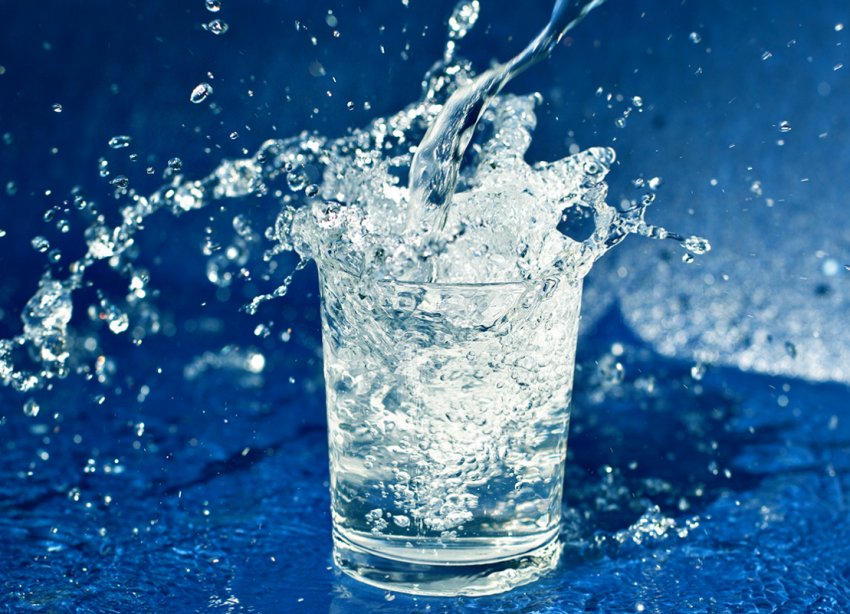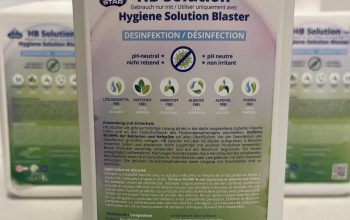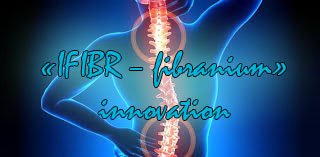The development of new technologies for purification of drinking water to ensure its epidemiological and radiation and toxicological safety on the basis of usage of composite materials, got by expanding simple hydrocarbons under the influence of a plasma arc.
Grand-Doctor of Philosophy, professor, academician Shanti P. Jayasekara
Doctor of Philosophy in Business Administration V. P. Ponimatkin
Doctor of Technical Sciences Professor E. Yu. Buzov
Doctor of Medical Sciences, Professor, Grand-Doctor of Philosophy V. I. Kasatkin
The real water – is essential characteristic of water in terms of knowledge, reflecting the current state of chemistry, molecular biology, genetics, physics, which are a theoretical and methodological basis for the formulation of interdisciplinary research in this subject area, devoid of pseudo-scientific approaches, subjective assessments and mysticism. There is no earthly matter – a mineral, a rock, a living body, which does not include it (V. I.Vernadsky, 1989).
Water is the most important substance and controls dynamics of all life processes (from the birth of an ovule to the complex acts of human behavior). The aqueous medium forms an indivisible system with subcellular and cellular structures of an organism, which have certain redox and proteolytic properties (E.S Bauer, 1995). This ensures existence of long-living electronic excitations and an energy transfer in biological systems (V. Ya. Antonchenko, 1986).
A status of biological fluids (water in cells and outside them) is a significant factor, determining an electric (electromagnetic) cells, organs and tissues of a living organism activity. A water molecule – is two dipoles, united in one whole structure, capable to receive and induct weak and ultra-weak electro-magnetic radiation, of a variable intensity and direction, phase and frequency. According to this reason behavior of all substances, which came into aquatic environment, is similarly to a dipole’s behavior, placed in an electrically saturated magnetic field. The most important physical and chemical properties of water should be considered as density, viscosity, surface tension of the closure, electrical conductivity, internal energy, dissolving ability. Activity of water is also determined by the presence of free radicals, the simplest of hydrogen, containing one proton and the only one unpaired electron.
Water, which is in normal conditions, contains dissolved gases (O2, CO2, N2), free radicals, over-saturated and under-saturated solutions of salts, small electrolyte concentrations, isotopic varieties of hydrogen molecules (deuterium, tritium), hydroxyl-ions. Water is characterized by constantly arising and destroying systems of hydrogen bonds (H-bonds), value of oxidation and reduction potential, existence of surface separation of phases under the influence of temperature, pressure, electro-magnetic fields, ultraviolet light, etc. The composition of biological fluids, whose careful regulation contributes to preservation of internal environment, includes – molecules of water, mineral salts, proteins and lyotropic liquid crystals (eg., lipids). Their transformations, which are of a space-time character, occur continuously in a range of biologically acceptable temperatures and discrete potentials of water decomposition: -0.4, -0.1, 0.19, 0.49, 0 78 V (at pH 7.5). That is why primary functional deviations in an organism are caused primarily by changing properties of biological fluids. This occurs due to electrical disturbances, i.e. ability of water molecules to mediate a transfer of electrons during oxidation and reduction reactions (V. V. Dovgusha: 2003).
In biological systems, the most widely presented are free radicals, formed as intermediates and by-products of oxygen molecules recovery. Among them the vast majority has a very short period of existence (10-9). After their appearance, they can be underwent molecular transformation (split or regroup). The processes, initiated by free radicals, have a number of important and useful for a body functions (phago-cytosis, spermatogenesis, regulation of membrane permeability, maintenance of homeostasis, pro-liferatsiya immunocompetent cells, etc.). However, excessive production of free radicals for leads to oxidative damage for cellular macromolecules. Their systematic accumulation causes development of a number of pathological processes (cancer, atherosclerosis, cardio-vascular diseases, immuno-depression, neurodegenerative diseases, cataract). It should be mentioned, that the intensity of oxidative damage increase largely depends on the ratio of rates of formation and neutralization of free radicals, i.e., usefulness of antioxidant defense of an organism. Such protection is carried out with the help of enzymes and non-enzymatic compounds, which affect intra-cellular and extra-cellular formations. Antioxidants – “cleaners” of free radicals, normalize the transfer of information from to extra-cellular to intracellular regulators effector systems to optimize the “protein-lipid interaction”. Intensification of generation of oxygen active forms (OAF) contributes to the destruction of cell walls and membranes of micro-organisms, that facilitates their digestion by phagocytic cells. The main targets, which the OAF interact with and through whose breach of structure their damaging effect is realized, are lipids, DNA and proteins. Among the OAF the highest redox-potential (E = + 2.7 B) has a hydroxyl radical, which is a strong mutagen and a strong cytotoxic factor. This radical is formed by expansion of hydrogen peroxide in the presence of ions of a divalent iron. The main neutralizer of its activity in cells is water (in a form of a liquid crystal). To the OAF also refers ozone, which has a powerful bactericidal action type. Penetrating into the cell, ozone connects with contained there poly-unsaturated fatty acids and forms biologically active groups of ozonides, which have oxidation-inflammatory effect on microbial membrane, destroying integrity of its membranes. It is such ability, which antiseptic effect of ozone is based on, which spreads not only in pathogenic bacteria and viruses, which are resistant to the antibiotic and antiviral drugs (for example, in treating patients with hepatitis B and papilloma-virus infection), but also in Chlamydia. Ozonides stimulate the immune system and, particularly phagocytosis. Oxidizing biologically active compositions, involved in inflammatory reactions, ozonides suppress inflammation. Ozone activates ferments, accelerating the processes of oxidation of carbohydrates, lipids and proteins with formation of the ATF-the main source of energy cells. That’s why almost immediately after exposure of ozone-oxygen mixture a person feels a surge of strength and energy.
The accumulation of oxidative damage of bio-molecules (lipids, proteins, intra-cellular and plasmatic membranes, collagen, DNA, enzymes) can accelerate the processes of natural and premature aging, which contributes to development of diseases of elderly age. A significant role is played by an action of unfavorable environment factors, contributing to excessive formation of OAF and development of oxidative stress, and namely ionizing radiation and ultraviolet light, air, water and food pollution by harmful chemicals (xenobiotics).
The most general conclusion to be drawn, which should be made from the analysis of the presented materials, is that the work of the chemical machinery of life is possible only in the aquatic environment.
Indeed, water provides a synthesis of hormones, enzymes, cytokines, multi-sided aspects of cell metabolism, biochemical detoxification of endo-and exotoxins, antioxidant protection, unspecific resistance, immunological memory and elimination from the organism bearers of allogenic genetic information. In addition, aqueous solutions of various substances counteract slow movement of body fluids (blood and lymph), which is observed when violating functions of an excretory system. In this case we are talking about optimizing the hydrodynamics of the body in order to remove him from it the products of metabolism, pesticides, cations of heavy metals salts and other organic and inorganic compounds.
Ultimately, a rational mode of drinking, which presupposes usage (as food) of high quality water, stimulates system recovery mechanisms (sano-genesis) due to environmental problems of a whole number of regions, decrease of a demographic potential, an existential explosion in national consciousness. This is a prerequisite to the selection of an optimal strategy of social policy, which is aimed at preservation of public health, and improvement of a life quality. In this regard, a promising direction is creation and implementation into practice samples of new equipment for after-purification of water and water-conditioning, developed in the light of its special properties, which are due to, first of all, H-bonds. Their strength in its molecules is determined by an oxygen atom, which is, due to the electro-negativity, a proton acceptor. When forming hydrogen bonds the energy states of interacting molecules are changing. The grid of H-bonds in water is capable to stretch, bend and break. The elasticity of a network, the desire to preserve its initial configuration, create conditions for recombination of solutes, pushing them out into places of defects of such network.
Thus, the possibility of a constructive resolution of problems caused by globalization, an environmental and demographic crisis, we associate with a unique natural phenomenon – true water as the ultimate controlling force, which governs the worldwide exchange of substance, energy and information.
Biological fluids (diluted aqueous solutions of different substances) – is a perfect indicator of weak and, especially, ultra-weak effects of external physical fields on a living organism, i.e. some bio-computer with a storage and retranslating devices.
The character of structural changes in water determines a network of hydrogen bonds. It is this network, which causes a surprisingly large heat capacity of water and exceptional strength of its cohesion and adhesion.
These properties significantly affect the kinetics of cellular metabolism and the level of oxidation and reduction potential.
Life on the Earth without hydrogen bonds would be impossible. (Sent-D’erd’i, A., 1964).
The theory of a structural and dynamic adjustment of water opens up new horizons in preventive action.
Water treatment technologies, as a rule, optimize the network of hydrogen ties between its molecules, which leads to a dynamic restructuring of microstructures of activated water (associates). This, in its turn, leads to a change in its physical and chemical characteristics, namely: solvent strength, electrical conductivity, dielectric constant, viscosity, and ability to mediate the transfer of electrons in oxidation and reduction reactions in aqueous solutions, i.e. in the cells habitat. It is worth noting, that such reactions are the basis of most of the thinnest phenomena of life. Therefore, human health – is a balance of RP.
In world practice there are several water treatment technologies (electro-dialysis, ultraviolet photolysis, filtration, ion exchange, adsorption, reverse-osmosis, radiolysis, distillation, etc.). We offer a new way to process liquids, based on the synergy of two promising technologies – natural electrolysis and usage of filtering and sorbing materials with predetermined properties. Thanks to this approach, an optimal level of background radiation in the water is reached, and occurs its disinfection and decontamination of chemical toxins (ions of heavy metals, secondary chlorinated organics).
Evidence-based medicine sharply needs objective and accurate information about the wise gift of the Universe – water structures. On its basis engineering-technological decisions are made, urgent to medical workers of different profiles of activity, including specialists on assistance to women during pregnancy and childbirth, during the neonatal period.
Indeed, water as a major component of the human body, ensures the energetic balance of a “mother – placenta – foetus” system and is the habitat of differentiating cells, tissues and organs. To run the self-organization mechanism (embryonic growth), is required a certain level of intensity of a magnetic field. The first impetus to the development of foetus’ cells is provided by the geomagnetic field. Then, the vectors of these fields interact with information vectors of the mother’s bio-field in a spherical volume, whose medium is crystal-like quanta of water. The lack of amniotic fluid leads to the death of the embryo.
A right-possessor of technology of production of a number of a new generation composites for water purification is a company LLC “FACTORIYA LS” (St. Petersburg). Only in recent years the organization has developed and implemented in the production sorption and filtering compositions of a new generation PSUM® and KARBOVER. PSUM® provides a complete water purification from radio-nuclides, secondary chlorine organic, heavy metals.
KARBOVER – is a new composite materialm created by the processes of low-temperature plasma stimulation of simple hydrocarbons expansion (acetylene) and application of the final product of such a stimulation of carbon nano- and micro-particles in the vermiculite – a mineral, having a layered structure.
A comparative evaluation of the effectiveness of PSUM® and activated carbon for water purification from trace is carried out (Table 1) with definition of its toxicological safety by bio-testing. The purpose of the study is to give a comparative assessment of the effectiveness of the filter-sorption of PSUM® and activated coal to pure drinking water, contaminated with metal ions (Fe, Al, Cd, Co, Cu, Mn, Ni, Pb, Zn), ammonium salts, nitrates and residual chlorine in hygienically relevant concentrations and to determine the safety of this sorbent on the test-object Daphnia.
Table 1.
| Component | MPC, mg/dm 3 | concentration mg/dm 3 (sorption,%) | ||
| initial solution | activated carbon | PSUM® | ||
| Al | 0,5 | 5 | 4,16 (16,8) | 0,15 (97) |
| Cd | 0,001 | 0,0097 | 0,00094 (90,3) | 0,00003 (99,7) |
| Cо | 0,1 | 1 | 0,03 (97) | 0,078 (92,2) |
| Cu | 1,0 | 10 | 7,0 (30) | 0,2 (98) |
| Fe | 0,3 | 3 | no sorption | 0,086 (97,1) |
| Mn | 0,1 | 1 | 0,27 (73) | 0,27 (73) |
| Ni | 0,1 | 1 | 0,37 (63) | 0,16 (84) |
| Pb | 0,03 | 0,313 | 0,29 (7,3) | 0,00202 (99,4) |
| Zn | 5,0 | 50 | 47,5 (5) | 18,3 (63,4) |
| Nitrates | 45 | 350 | no sorption | no sorption |
| Ammonium | 2 | 100 | no sorption | no sorption |
| Residual Chlorine | 0,2 | 0,2 | no sorption | no sorption |
The received results indicate that PSUM® in its effectiveness is not inferior to an activated carbon, and in a number of cases its effectiveness, i.e. ability to absorb metal ions, is largely higher. That’s why PSUM® can be recommended for treatment of water from the trace of inorganic nature (aluminum, copper, iron, lead, etc.). It is determined, that PSUM® has no acute toxic effect on aquatic organisms Daphnia magna Stratus. In other words, PSUM® prevents a toxic effect of newly selected not defended water on Daphnia, which may be indicative of its harmlessness to living organisms.
The estimation of sorption activity of PSUM® is carried out in relation to natural radionuclide 226Ra. Sorption activity PSUM®, defined in distilled water, was about 290 (with a confidence value of the exponent in the interval 195 ÷ 380 at P = 0.95). An estimate of the lower boundary values of the sorption-eating dice of PSUM® showed that it is not less than 1800 Bq / kg.
Consequently, PSUM is characterized by high sorption activity of respect to the natural radionuclide 226Ra in water. When filtering distilled water with dissoluted 226Ra through this material is examined decrease in the studied medium of specific activity of radio-nuclides at least in 100 times.
Since natural radio-nuclides 224Ra and 228Ra in chemical ratio are full analogues of radio-nuclide 226Ra, the data obtained to assess the sorption activity of this filtering composition with respect to radio-nuclide 226Ra in water can be fully attributed to these radio-nuclides.
Thus, PSUM provides complete water purification from radio-nuclides and heavy metals. This sorbent has properties, overwhelming the superior characteristics of activated carbon and natural granite material in many indicators.
The values of the basic sorption characteristics of KARBOVER in relation to natural and man-made radio-nuclides, containing in natural water.
Table 2.
| Sorption characteristics | controlled radionuclide | ||||||
| 226Ra | 238U | 210Po | 210Pb | 137Cs | 131I | 90Sr | |
| sorption activity, %% | 67,5 | 87,8 | 57,5 | 66,4 | 72,7 | » 100 | 16,3 |
| Sorption capacity,
Bq / kg |
3500 | > 700 | 800 | 900 | > 100 | > 1500 | ~ 960 |
When filtering water through KARBOVER a complete precipitation of anthropogenic radionuclide 131I. There are no found data on the absorption of radio-nuclides from the liquid media, found in the scientific literature.
Sorption activity of filtering material KARBOVER in relation to anthropogenic radio-nuclide 131I in natural mineral water is close to 100%. Moreover, in the process of filtering natural water through the filtering material its sorption activity in relation to the given radio-nuclide is almost not reduced.
It is experimentally proved that the sorption capacity of this composite in relation to the most popular anthropogenic radio-nuclide 131I is not less than 1500 Bq / kg. However, this value should be regarded as a lower bound estimate sorption capacity of this filtering material.
In addition, KARBOVER has a high sorption activity and capacity in relation to anthropogenic radio-nuclides – 134Cs, 137Cs and other isotopes of iodine, and can be used for efficient usage of natural water purification from these radio-nuclides.
KARBOVER, as a sorbent, has a high sorption activity in relation to the main and most common in groundwater natural radio-nuclides 226Ra, 224Ra, 228Ra, 238U, 235U, 210Pb and 210Po. This composite reduces the resistance of their activity up to 80%.
Thus, considering both a sufficiently high sorption capacity in relation to these natural and anthropogenic radio-nuclides, KARBOVER can be used for the efficient usage of potable water.
In conclusion, it is important to note that treatment of water, based on the usage of new formulations of sorption and filtering (eg., composite Karbover) – is the most important task, whose solution does not require costly and substantial infrastructure adjustment of systems of drinking and domestic water supply of population.
IUFS Water Research Institute



